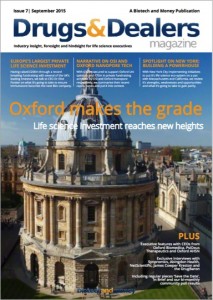Investing in making the undruggable druggable
Quality sites
- Online Casinos UK
- Casino Non Aams
- Casinos Not On Gamstop
- UK Casinos Not On Gamstop
- Best UK Casinos Not On Gamstop
- Casino Sites Not On Gamstop
- Meilleur Casino En Ligne Live
- Casino Sites Not On Gamstop
- Casino Sites Not On Gamstop
- Non Gamstop Casino Sites UK
- Non Gamstop Casinos
- Best Online Casino Canada
- Casino Sites Not On Gamstop
- Non Gamstop Casino UK
- UK Online Casinos Not On Gamstop
- Best Slot Sites 2025
- Casinos Not On Gamstop
- Meilleur Casino En Ligne
- Non Gamstop Casinos
- Slots Not On Gamstop
- Non Gamstop Casino
- New Online Casinos Not Registered With Gamstop
- Casino Non Aams Sicuri
- Casino Sites UK Not On Gamstop
- Casino Non Aams Italia
- Bitcoin Casino
- Meilleur Site Casino En Ligne Belgique
- Casino App
- Migliori Siti Scommesse Non Aams
- Meilleur Casino En Ligne De France
- Nouveau Jeu Casino En Ligne
- No Kyc Online Casino
PhoreMost Ltd, a biopharmaceutical company focused on increasing the diversity and affordability of novel therapeutics, announced in May that it has been selected to receive a funding award of £1.4M from the UK’s innovation agency, Innovate UK, to develop its lead oncology programme targeting mutant KRAS cancers. Here we caught up with Dr Chris Torrance, company CEO about their funding, their lead oncology programme and more importantly their unique approach to making un druggable targets durable.
B&M: Chris, perhaps we could start with your company elevator pitch.
CT: PhoreMost is a new drug discovery company using a new phenotypic screening platform to identify the best targets for various diseases, and crucially, how to drug those targets. A very interesting step in pharma at the moment is understanding what are really good targets to drug. Unfortunately when they do find those targets they’re frustratingly undruggable. So finding new ways to drug a large proportion of important disease targets is a major issue for pharma right now, and we have a platform that can identify what we think is a large number of cryptic drug sites in the human genome and then rapidly convert those into new therapies.
B&M: When you talk about propriety technology can you explain in more detail, I assume you’re talking about your SITESEEKER screening platform?
CT: Yes, the SITESEEKER platform is at the core of our company. This is the discovery engine to identify new targets and also how to drug them. Then we’ll persue fairly conventional drug discovery programmes to those targets, and in the early days licence those to pharma.
The unique aspect of SITESEEKER is that it screens genome-wide for novel target functions and disease linkages directly at the protein level, which is exactly where small molecule drugs ultimately act, so we address the crucial druggability question as an inherent part of the target-identification and validation process.
Other screening platforms screen at the genetic level. They can only tie in genes with a particular function or action on a disease, not how to drug those targets, because they work at the DNA level not protein level where drugs work. Generating such information on an isolated target, usually performed outside of a cell, after the screening process, adds many more months or even years to the process. Moreover, one will still invariably miss the cryptic sites we believe are only present significantly for initial identification in a live cell environment.
B&M: Would you say that’s the unique angle? The fact it targets at the protein level.
CT: It is. Nobody else has systematically searched for new druggable space at the protein level before. Partially because people just didn’t have a good way to approach the identification of cryptic druggable sites in live cells and by taking this approach have the ability to then link those sites to a useful function in disease. Previously, the field has been enamoured by the power of genomics, i.e. screening gene function at the relatively simple RNA or DNA-level, principally driven by advances in targeted
gene-suppression, or knock-out, techniques and genome
sequencing. However, you can only get so far with that. They are very powerful techniques and have some important uses. But when it comes to converting information like target X Y Z is associated with disease X Y Z and then ultimately getting a drug that addresses those diseases, this still takes a very long time and a lot of investment. For all their benefits, genomic techniques just don’t get you there very quickly. Now working at a protein level, while theoretically can short-cut this process, is many orders of
magnitude more complex from a screening process than working at a genetic level. There are only 30,000 genes roughly in the genome and they will encode roughly 100,000 proteins when you take into account different splice variants etc. But then each protein can do more than one thing, often they bind more than one protein and their three-dimentional conformations are altering all the time. So screening the proteome inside a cell is a very complex situation, which is probably why people have tended to shy away from finding ways to screen at this level in the past.
B&M: And you’re using this technology to develop your own drug discovery programme?
CT: That’s correct. We do have ambitions of being an end to end drug discovery company. But we want to work in a slightly different way from classical pharma which have been large centralised
organisations.
Even they are changing quite a bit now, downsizing and working in a more collaborative way. So I think a small innovative biotech should work with other innovative biotech’s to provide all the pieces of a puzzle to get from end to end rather than doing all that centrally.
That can even include academia. If we’ve got a drug discovery engine, which is going to find lots of
different targets, the chances of us being experts in that target are relatively slim. So we need to work with experts, especially in academia, with the deep knowledge regarding the biology of those targets. But then work with industry partners to help with chemistry to develop the drug candidates and perhaps in time, I’d like to think we could influence clinical centres to work
collaboratively; rather than charging pharma loads of money, actually become partners in the process and try and get ultimately those therapies onto the market at a cheaper price.
So we have 2 main aims to our company. One is a technology
solution we feel is good. But if it works, try and find a new ways to get this drug discovery model working a bit more efficiently and cheaper ultimately for patients.
B&M: Is this technology something you’ll be licencing out as well?
CT: I started a company prior to this called Horizon Discovery, based in Cambridge in the UK. They are a genetics tools and services provider, creating genetically defined in vitro disease models to reflect different patient populations and that
supports many aspects of drug discovery. That company was very much a service company. But this one’s very much a drug discovery company. Ultimately I think someone has to take a lead in trying to discover drugs more efficiently and more cheaply, and to just do services I think won’t achieve our long term aim of doing that, I think it also undervalues the platform.
But in the early days while we’re still scaling-up and further validating the platform, we will do early collaborations with pharma. But ultimately what I want to do is licence is license new targets with new candidate drugs to them, not the platform.
B&M: So it’s more likely going to be more traditional collaboration and partnerships?
CT: Yes. In the first 5 years I imagine in vivo validation stage type targets, with drug candidates, with Pharma taking those into the phase 1-3 clinical stage testing. But perhaps five years down the road we can be doing that ourselves too. Especially if we can find clinical partners that would help co-develop these programmes. This is something I hope to engage the NHS on in the coming years.
B&M: In April you raised over 2.5 million in seed funding from a number of Cambridge based investors. What do you think it is about your story that investors found compelling at this stage of your business?
CT: I think that they can see the technology solution we could be providing. While at an early stage, the potential for it to be disruptive is high. Obviously there’s some risk to it. But the kind of people who are investing liked that potential for it to be transformative. So that was it.
B&M: Do you think the fact that you have an opportunity to have a hybrid model, a service and drug discovery model, helped them mitigate the risk of coming in early?
CT: The platform has a good concept and some evidence behind it for it working, but it needs a bit more road-testing before we know that for sure, so to have ways of mitigating this risk was desirable for myself and investors. Early collaborations are one way to achieve that, but not the only way.
So that’s where having an early lead programme comes in. The
co-founder, Ashok Venkitaraman, who developed the SITESEEKER screening technology also identified a couple of novel targets, and we have been doing chemistry on those targets for about a year and they look pretty good. To have the
potential to have a couple of early win programmes, even if the
platform doesn’t work, there’s going to be some return on their
investment.
But the upside is hopefully the platform will work and then you have a long term investment in a disruptive technology. So the risk was balanced as much as it can be in the fairly risky area of drug
discovery.
B&M: We hear a lot about the importance of management teams in funding situations. In terms of the strength of the rest of the
commercial team you’re building, do you think this obviously had a very positive effect on the outcome?
CT: The people that invested were the same people who invested in Horizon, so they are to a degree investing in a track record and the fact they know you, trust you, and believe you’ll work hard on a
problem. They know problems will arise, but if they know you will work hard on it, there’s at least a chance you will succeed.
So I think of course they’re going to be investing in people. They had to trust me that I’m going to build a good management team, because we didn’t have a management team at the point of investment. That is coming together now.
They also believe in the academic founder, Ashok Venkitaraman. In his area of cancer research and translational science, he’s a pretty prolific guy and they’ve known him for a while as well. So that’s also a factor.
They have advertised pretty well that these funds are available for appropriate projects and while I was thinking about equity investment it was also part in my mind to de-risk the investment by trying to get non-dilutive funding into our lead programme.
Having a specific target and ongoing chemistry to that target fits very well with the type of thing that Innovate likes to fund. Especially in this modern era, where if you can provide good mechanistic evidence that your target directly addresses a clear patient population, then a more streamlined path to clinical approval can be gained. Our lead programme definitely falls into this class. The review process is pretty rapid, which is very attractive and we were able to determine whether we would have a good chance of getting it while we were looking for equity investment, which also helped that process. What Innovate UK is aiming to do with their funding, in addition to supporting good scientific projects, is to also look at the potential of that company to be something longer-lived, helping to drive an innovative UK economy. So they do actually like to see their funds helping you attract other equity investment, and I think that’s exactly what it did. So we’re very thankful it is there.
B&M: How do you see those funds being allocated?
CT: We’ve got some early programmes, one we’ve made public. But we also need to scale up the promising SITESEEKER platform developed in Ashok’s academic lab into a more industrial mode.
We need to demonstrate that this works on a number of diseases or disease pathways, and that we get a reasonable rate of identifying new targets. Early proof of concept shows, yes we can identify a targets in a couple of pathways, but that needs to be a lot broader to show commercial viability. Our equity investment is split roughly equally between further developing the platform and the lead programme. Innovate’s funding directly helps defray the costs of our investment in the lead programme.
B&M: Are there any recent developments coming up that you’re particularly excited about?
CT: We’ve been discussing for a few months now, with quite a few
different biotechs and pharmas, doing some early collaborations on the platform on pathways and diseases of their interest.
Somewhat to my surprise, and I think this is reflective of their need to try and de-orphan undruggable targets, this has moved faster than I thought. Everyone has their favourite targets, which are often undruggable, while the easier stuff has largely been done, yet often less effective than hoped, so everyone now knows they need to tackle better but very difficult targets.
So the message of having a platform that can potentially help address those difficult targets has been very well received, with quite a few companies keen to get in early to see if this works on their pathways of interest. While ahead of my business plan schedule, I am ready to do those collaborations this year, which will be the next milestone I’d say.
B&M: What’s the level of the ambition you hold for PhoreMost and its portfolio?
CT: The main thing is to develop a pipeline of our own targets moving towards clinic. While in the early days we pass those onto pharma, I would eventually like to go deeper into the game, working in more efficient co-development partnerships and pass those cost-savings onto patients. We might have to be quite
inventive and innovative on how that’s done, because we’re not a big company. We don’t have hundreds of millions behind us. But I think we can start to recruit likeminded and co-invested
partners who will take a piece of the asset value in return for doing their expertise in that value stage.
So I’m wondering if there’s a new model the NHS would consider: if we promise to not charge such high final prices, would they in turn directly help us co-develop drugs, and even benefit from revenues from those drugs to help fund themselves in a time of increasing healthcare demands within an ageing and growing society? Ultimately, if the benefits of personalised medicine are going to be realised, we’re going to need hundreds of new ‘targeted’ therapies and no healthcare system can afford to pay 100-200 thousand pounds a year for such treatments, as they currently are. Moreover, if they need to be tailored in rational combinations then the problem will spiral even further, so we have to explore alternative models.
So can we really find a new way of doing personalised medicine? I think the UK could be the ideal proving ground for testing this. With a joined up healthcare system (which is not the case in the U.S.) and a diverse group of patients, it should be the ideal place to try and find a new way of doing drug discovery. I just need to find the right persons to talk to in the NHS.
I feel blessed to be working with something that could have a disruptive effect on a scientific front. But then to actually use that potential to be disruptive socially as well; those two things drive me quite strongly.
You can read this and 10 other exclusive executives interviews in May’s Drugs & Dealers Magazine.






Leave a comment